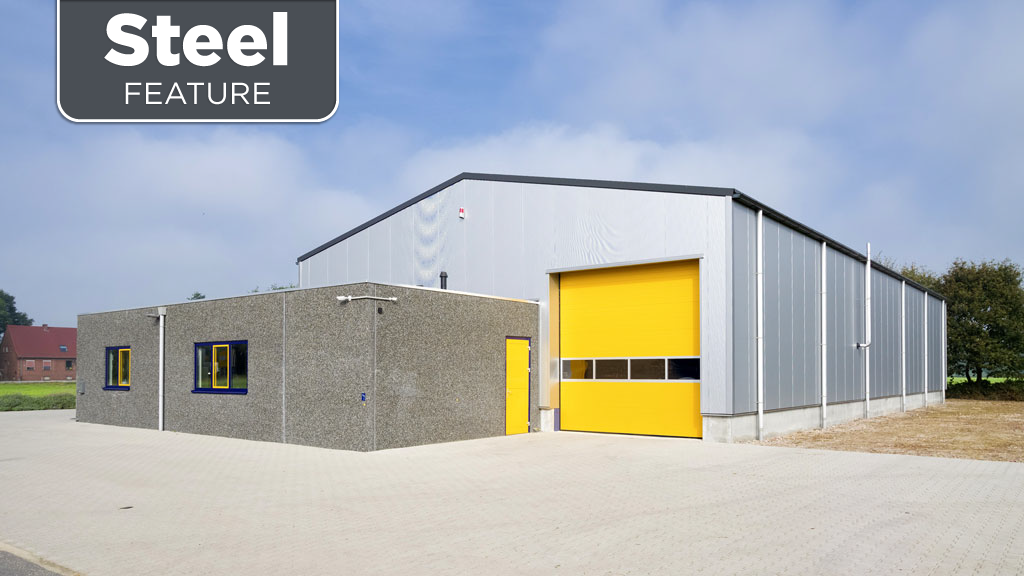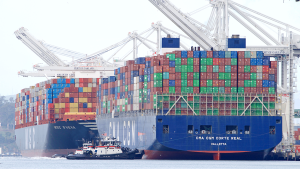Steel is currently used in everything from agricultural and self-storage buildings to garages, community halls and airplane hangers. Now, it’s being touted as the material of choice for cannabis-growing facilities.
Jim Busch, founder and owner of Global Steel Buildings in Richmond Hill, Ont., which built a large cannabis-growing facility for a customer in Smiths Falls, Ont., says the clear-span design — and the fact there are no interior columns to get in the way — makes them more attractive to producers.
Grow-ops often have rows of hundreds of plants and an open design is important because it permits maximum use of floor space and makes it easier to use common sprinkler and heat systems he notes.
“A metal cannabis-growing facility is ideal for cannabis growing, logistics and processing,” explains Busch.
“With no interior columns, our space will accommodate crops and the systems required for daily operation. Our metal buildings are built to be durable and secure. In the highly regulated field of cannabis-growing operations, high-level security is an important consideration. Global Steel Buildings Canada’s metal buildings are designed to be compliant with government requirements for cannabis cultivation.”
Indeed, the expansive, open interior of the structures make them ideal for using artificial lighting, dehumidification and irrigation control systems required for a commercial, multi-season cannabis-growing operation. The buildings also create a weather-resistant cultivation atmosphere that accommodates the necessary ventilation and air-conditioning important to a cannabis grow-op.
“Unlike other building systems, pre-engineered steel buildings are self-supporting,” says Busch. “Straight-wall steel buildings, using a clear-span design, do not require interior walls or columns. Adding floor space for future expansion is economical. Additional space can be added at the end wall by adjoining an end-wall expansion steel building utilizing the same design. The addition length is virtually unlimited.”
Global Steel got involved in the Smiths Falls project when approached by the cannabis company. Busch had partnered with the company on several earlier projects.
“The objective was to replace an aging and inefficient structure so that the grower can improve product growth and output,” says Busch. “We provided a pre-engineered steel building, 50 feet wide by 120 feet long by 18 feet high.”
Once the contract was signed, the team at Global Buildings went to work.
Because it was a clear-span, rigid-frame design, the structure required an engineered foundation. Global engaged a licensed engineer to design the foundation to Ontario Building Code and National Building Code requirements, taking into account local soil conditions and making sure the base could support the weight of the building and abide by all government-specified standards for wind, snow and seismic forces.
The building itself was erected in just two weeks but the interior finishing work to create an ideal growing environment took another three months.
Busch says that such buildings will last a lifetime. Global is involved in and manages all stages of the process, from quoting, designing, engineering and manufacturing.
Canadian Engineer Stamped Drawings are always provided as a part of your steel building package, he notes.
In order to further expand its growing space, the cannabis-growing company also decided to add more processing, product formulation and logistics facilities. The expansion tripled the company’s fulfillment capacity.
According to Busch, pre-engineered steel buildings have come a long way since they were introduced in the 1940s because the material is so easy to engineer, fabricate and erect.
With Canada having made the recreational use of cannabis legal, and many U.S. states jumping on the bandwagon as well, construction of facilities for cannabis grow-ops has been steadily rising. A key requirement for businesses in the emerging market is getting facilities to market quickly to keep up with growth.
The pre-engineered building process, which allows a structure to be customized to suit a customer’s needs, enables companies to get their structures built quicker than traditional brick and mortar construction methods.
When better physical security, climate-control, and fire resistance are added to the mix, steel becomes an ideal choice.
Busch says that steel buildings are also able to withstand dramatic Canadian weather changes and winter.
The buildings are especially attractive because they can easily and quickly be customized to customer specifications, he says.
“Metal buildings provide a quick return on investment as they can be erected quicker than structures built with traditional materials like wood and concrete block. These buildings are cost-efficient and offer excellent value for long-term performance.”
But there are environmental considerations as well, according to Busch.
“By choosing a pre-engineered steel building for your growing facility, you are choosing sustainability. Steel construction produces less waste than any other building material.”
The steel is recyclable and the pre-engineered building system is shipped to the jobsite with no cutting or fabrication required.
Global is planning construction of more cannabis-growing facilities in future.
“We have a number of projects in the planning stages that surpass the size and scope of our Smiths Falls project,” says Busch.







Recent Comments